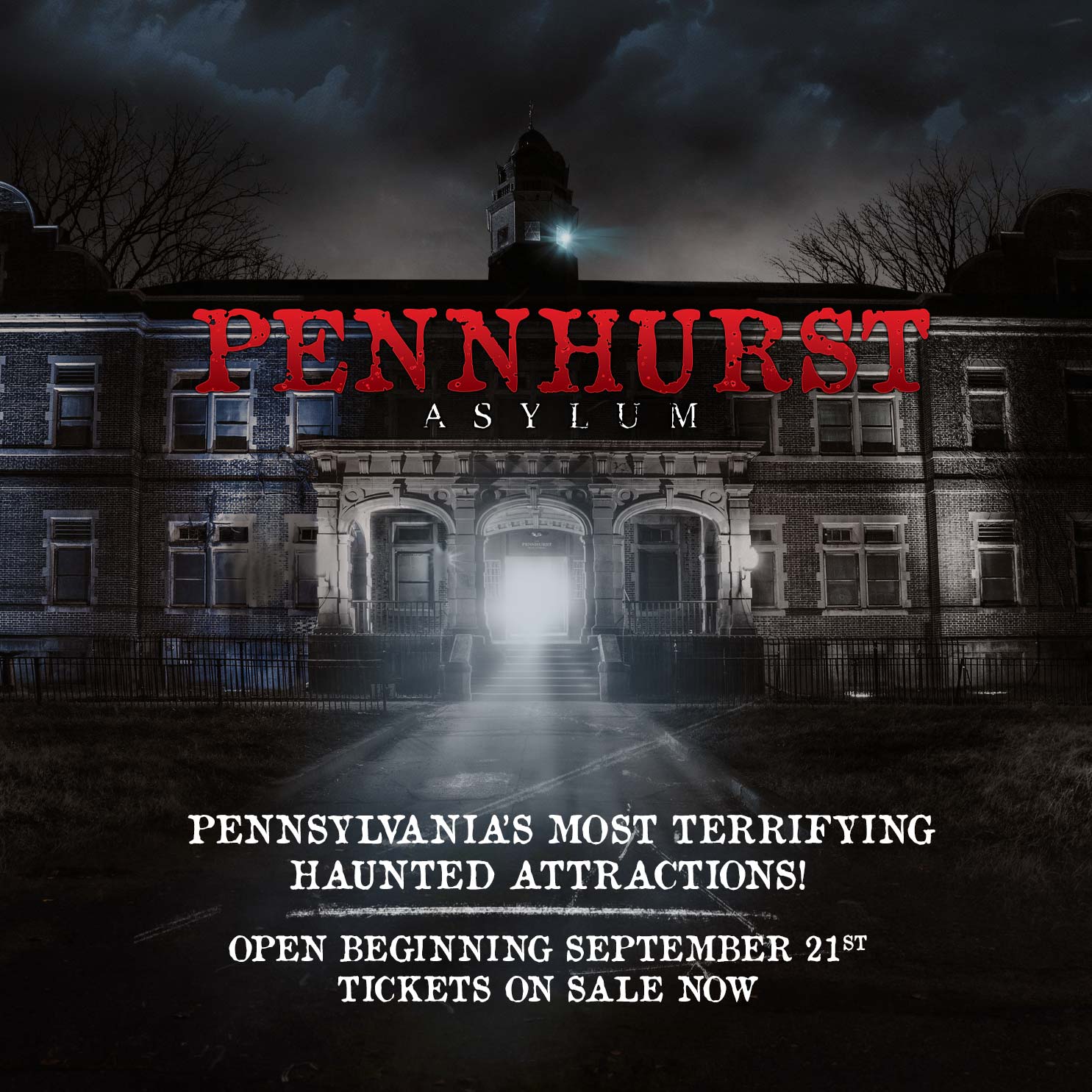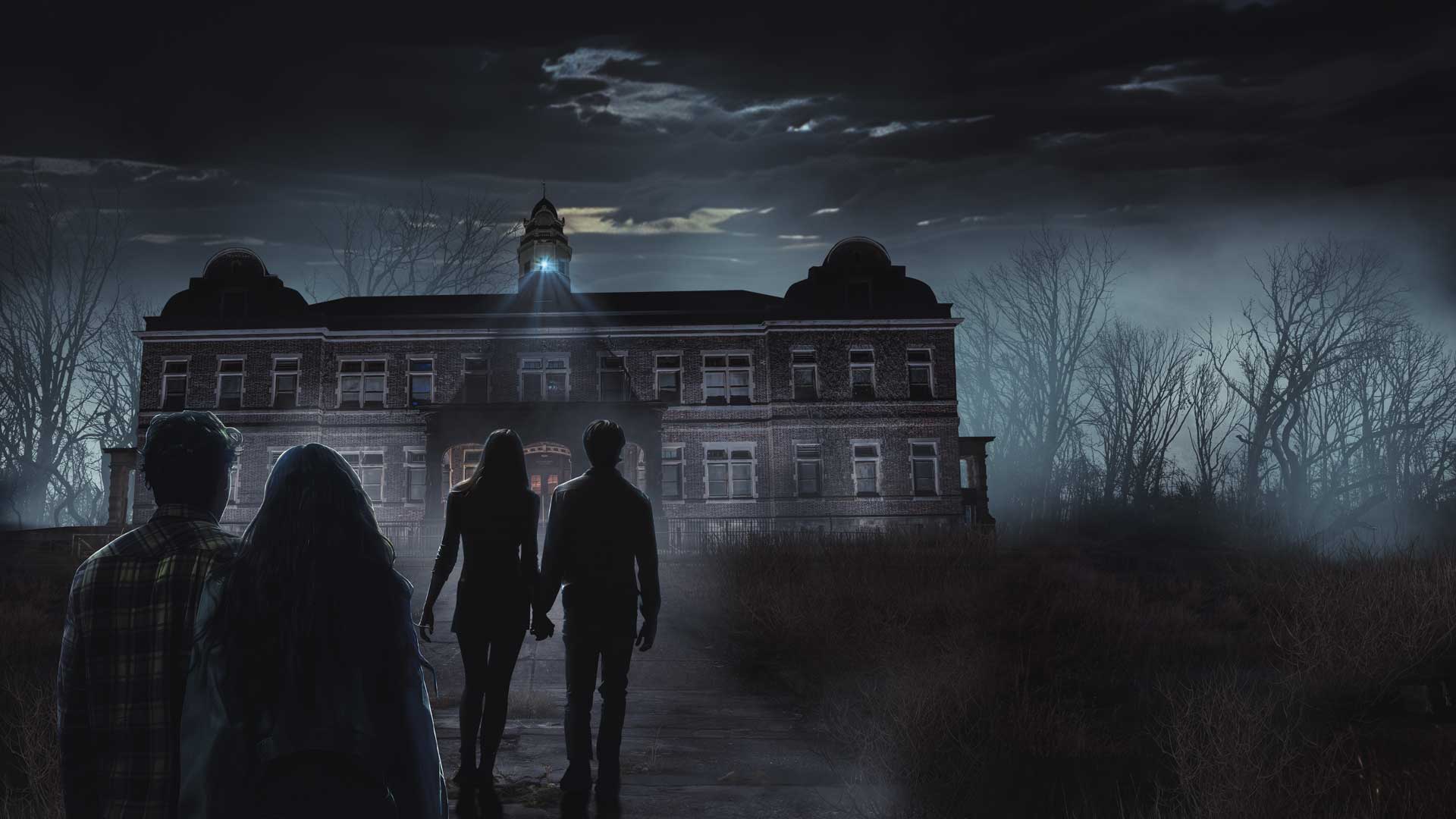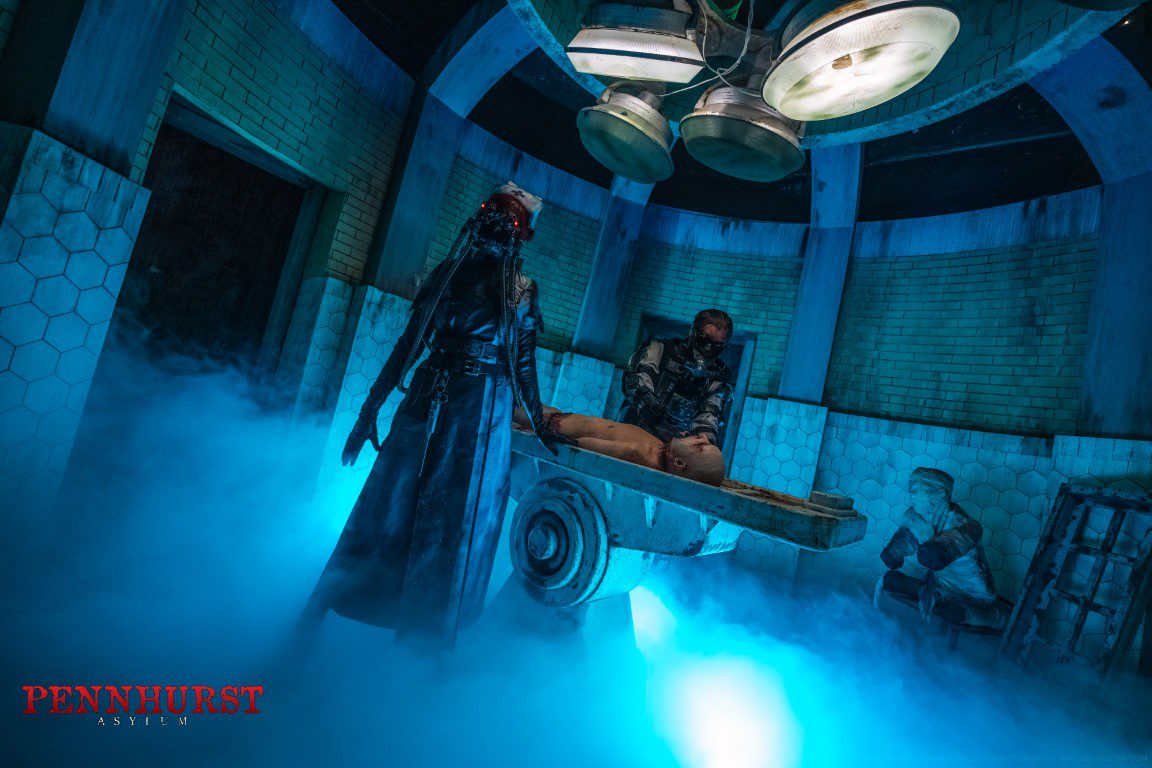Pennhurst Asylum: Unveiling Pennsylvania's Dark Past
The Genesis of Pennhurst: A Troubled Beginning
The story of Pennhurst State School and Hospital, located in Spring City, Pennsylvania, begins with intentions that, on the surface, appeared noble. However, the reality of its operations quickly deviated, setting the stage for decades of controversy and suffering. To truly understand the profound impact of Pennhurst Asylum, we must first examine the context of its creation and the foundational flaws that plagued it from the very start.Purpose and Initial Design
Opened in 1908, the institution was originally known as the Eastern Pennsylvania Institution for the Feeble Minded and Epileptic. Its primary design was to house and care for individuals with epilepsy and those categorized as having intellectual and developmental disabilities. At the turn of the 20th century, the prevailing societal view was that such individuals required institutionalization, often for their own supposed good, but equally to remove them from mainstream society. The concept was to provide a specialized environment for care and education, a place where these individuals could supposedly thrive away from the complexities of the outside world.Problems from the Start: Overcrowding and Eugenics
Despite its intended purpose, Pennhurst faced problems from the start. By 1912, just four years after opening, it was already overcrowded. This immediate strain on resources was exacerbated by a much darker societal undercurrent: the eugenics movement. This pseudo-scientific belief system advocated for the "improvement" of the human race through selective breeding and, chillingly, the forced sterilization and institutionalization of those deemed "unfit." Society, steeped in this movement, exerted tremendous pressure to admit a wide array of individuals whom they wanted removed from the "gene pool." This included not only those with intellectual disabilities and epilepsy but also immigrants, orphans, criminals, and anyone else considered undesirable or a burden on society. This expansive and indiscriminate admission policy meant that Pennhurst State School and Hospital quickly became a dumping ground for anyone society wished to forget. The sheer volume of patients, coupled with a lack of adequate funding and staff, ensured that the institution could never fulfill its stated mission of compassionate care. Instead, it became a warehouse for human beings, setting the stage for the tragic conditions that would define its legacy.Life Within the Walls: A Descent into Despair
The history of Pennhurst Asylum is not merely a tale of architectural decay or spooky legends; it is a profound human tragedy. Within the walls of its various buildings, including the Mayflower Building, patients endured conditions that defy comprehension, marking Pennhurst as a symbol of systemic neglect and abuse.A Place of Torture, Exploitation, and Isolation
For decades, Pennhurst was a place of torture, exploitation, and isolation. Patients, many of whom were non-verbal or had severe disabilities, were often stripped of their dignity and their basic human rights. The institutional environment fostered a culture where individual needs were ignored in favor of maintaining order, however brutal. Residents lived in overcrowded dormitories, often with little privacy or personal space. The very structure of the institution, designed for mass containment rather than individualized care, contributed to a pervasive sense of isolation. Families often found it difficult to visit, and once admitted, many patients were effectively cut off from the outside world, their voices silenced, their suffering unseen by the broader public. This isolation made them incredibly vulnerable to the abuses that would become synonymous with Pennhurst.Abuse and Neglect: The Dark Reality
The reports and testimonies from former residents and staff paint a harrowing picture of daily life at Pennhurst. Patients suffered physical, emotional, and psychological abuse on a routine basis. Basic hygiene was often neglected, leading to widespread illness and unsanitary conditions. Perhaps one of the most chilling details is that the asylum’s staff would often tie the patients to their beds and leave them alone for hours, if not the entire day. This practice, ostensibly for control or safety, was a cruel form of restraint that left individuals helpless, terrified, and utterly alone. Beyond physical restraints, patients endured beatings, sexual assault, and emotional torment. Their cries for help often went unanswered, drowned out by the sheer chaos and indifference that permeated the institution. Malnutrition was common, and medical care was often inadequate, leading to preventable deaths and prolonged suffering. The systemic nature of this abuse was not merely the result of a few bad apples but a consequence of understaffing, lack of oversight, and a dehumanizing philosophy that viewed patients as less than human. The horrifying conditions at Pennhurst State School and Hospital eventually drew the attention of activists and legal professionals, setting the stage for a monumental battle for human rights.The Fight for Change: Advocacy and Deinstitutionalization
The dark realities within Pennhurst Asylum could not remain hidden forever. As the 20th century progressed, a growing awareness of human rights and the plight of institutionalized individuals began to emerge. This led to significant legal challenges and a profound societal shift known as deinstitutionalization.Moving People from Institution to Community
One of the most pivotal moments in Pennhurst's history, and indeed in the history of disability rights in America, was the landmark 1974 class-action lawsuit, *Halderman v. Pennhurst State School & Hospital*. This lawsuit, filed on behalf of residents, exposed the horrific conditions and argued for the right of individuals with intellectual disabilities to live in less restrictive, community-based settings. The court ruled that residents of Pennhurst had a constitutional right to habilitation in the "least restrictive environment," meaning they should be moved out of the institution and into community living arrangements whenever possible. This legal battle was protracted and complex, facing resistance from those who believed institutions were necessary or who feared the cost and logistics of community integration. However, the ruling set a powerful precedent, challenging the very notion of large-scale institutionalization. It highlighted the fact that segregating individuals with disabilities not only denied them basic rights but also stifled their potential for growth and integration into society. The fight for Pennhurst’s residents became a national symbol of the broader movement to move people from institutions to community settings.The Broader Impact of Deinstitutionalization
The Pennhurst case was a catalyst for a nationwide movement that profoundly reshaped mental health care and disability services. The principle that individuals, regardless of their disabilities, deserve to live with dignity and participate in community life gained traction. This led to the closure of many large state institutions across the United States. The statistics vividly illustrate this monumental social change: from a peak of 190,000 people living in public institutions in 1969, that number plummeted dramatically. As of 2021, fewer than 15,000 people live in public institutions, and remarkably, 17 states have no public institutions at all. This shift represents one of the most successful social changes of the late 20th century, moving away from a model of segregation and neglect towards one of inclusion and support. While the transition was not without its challenges, and community services still face funding and resource issues, the principle established by cases like Pennhurst fundamentally altered how society views and supports individuals with intellectual and developmental disabilities. The legacy of Pennhurst, therefore, is not just one of darkness, but also one of profound change and the enduring struggle for human rights.The Closure: A Chapter Ends
The legal battles and mounting public pressure eventually sealed Pennhurst's fate. After years of litigation, appeals, and court orders, the institution was finally shut down. This momentous event marked the end of a long and painful chapter in Pennsylvania's history and served as a powerful symbol of the broader deinstitutionalization movement. The exact date of Pennhurst's official closure is often cited as 1987, although the process of depopulation had been ongoing for years prior. By 2013, about 26 years after it was finally shut down, the physical structures of Pennhurst remained, largely abandoned, standing as silent witnesses to the suffering that once occurred within their walls. The closure was not merely a logistical exercise but a profound societal statement: that such large-scale, isolated institutions were no longer acceptable. The residents, who had been confined for decades, were gradually transitioned into smaller, community-based homes, group residences, or reunited with families, marking a new, albeit challenging, beginning for many. The closure of Pennhurst State School and Hospital was a victory for disability rights advocates, proving that sustained activism and legal action could dismantle even the most entrenched systems of oppression. The abandoned buildings, however, would soon find a new, unexpected purpose.Pennhurst Reimagined: From Asylum to Attraction
Decades after its closure, the sprawling grounds and decaying buildings of Pennhurst found a new, unexpected life. The haunting atmosphere, coupled with its dark history, made it an ideal candidate for a different kind of institution: a seasonal haunted attraction. This transformation has allowed Pennhurst Asylum to remain in the public consciousness, albeit in a dramatically different context.Pennhurst Asylum Haunted Attractions
Today, Pennhurst Asylum is widely known as one of Pennsylvania's scariest haunted houses. The Pennhurst Asylum Haunted Attractions feature three terrifying haunted houses, capitalizing on the chilling reputation and authentic, dilapidated setting of the legendary Pennhurst Asylum in Pennsylvania. Visitors flock to the site, eager to experience the manufactured scares within the very buildings where real suffering once occurred. The attractions leverage the eerie ambiance of the abandoned hospital, creating immersive horror experiences that draw on the tropes of mental asylums, deranged patients, and vengeful spirits. While some critics argue that this commercialization trivializes the institution's tragic past, proponents maintain that it keeps the story of Pennhurst alive, prompting visitors to learn about its history even as they seek a thrill.A Spooky Valentine's Date?
Beyond the typical Halloween season, Pennhurst has also explored unique events, even marketing itself for niche experiences. Imagine indulging in a uniquely spooky Valentine's date, or seeking out "the most romantic horror experience." These events highlight the versatility of the site as a tourist attraction, moving beyond conventional haunted houses to offer themed experiences that cater to a specific audience looking for something out of the ordinary. This reinvention ensures that Pennhurst Asylum continues to be a destination, generating revenue and maintaining the property, even if its current purpose is far removed from its original, and tragic, intent. The transformation from a place of genuine horror to a curated experience of fear is a fascinating, if sometimes controversial, evolution.Exploring the Grounds: A Glimpse into the Past
Beyond the screams and scares of the haunted attractions, Pennhurst also offers opportunities for visitors to engage with its authentic history. Guided tours and historical exhibits provide a more sober and educational experience, allowing individuals to learn about the history and legacy of Pennhurst State School. These tours often take visitors through remediated spaces, allowing them to see the exteriors of sixteen buildings that once housed thousands of patients. While the haunted attractions focus on manufactured frights, the historical tours delve into the grim realities of daily life within the institution. Artifacts from the Pennhurst State School and Hospital are often on display, providing tangible links to the past. Perhaps most compelling are the opportunities to hear from former employees, who can offer firsthand accounts of the conditions, the challenges, and the profound impact the institution had on both staff and residents. This dual approach—part historical museum, part haunted attraction—makes Pennhurst a complex and multifaceted destination. It allows for both a thrilling scare and a somber reflection on the ethical responsibilities of society towards its most vulnerable members. Whether one seeks a terrifying experience or a deeper understanding of a dark historical period, Pennhurst Asylum offers a unique, albeit unsettling, journey into the past.Frequently Asked Questions About Pennhurst Asylum
For those intrigued by Pennsylvania's scariest haunted house, Pennhurst Asylum, or its complex history, many questions naturally arise. Here, we review some of the most frequently asked questions about Pennhurst Asylum, aiming to provide clarity and further insight into this infamous site. * **What was Pennhurst Asylum originally?** Pennhurst Asylum was originally known as the Eastern Pennsylvania Institution for the Feeble Minded and Epileptic, opened in 1908. It was a state school and hospital for individuals with intellectual and developmental disabilities and epilepsy, but also housed many others society wished to institutionalize, including immigrants, orphans, and criminals. * **Why is Pennhurst so controversial?** It became highly controversial for its poor conditions, documented abuse, and eventual closure due to legal action. Patients suffered physical, emotional, and psychological abuse, including being tied to beds for extended periods, and living in overcrowded, unsanitary conditions. * **When did Pennhurst Asylum close?** Pennhurst State School and Hospital officially closed in 1987, following a landmark class-action lawsuit (*Halderman v. Pennhurst*) that mandated the deinstitutionalization of its residents. * **What is Pennhurst Asylum now?** Today, Pennhurst Asylum is a popular museum and tourist attraction, primarily known for its terrifying haunted attractions featuring three haunted houses. It also offers historical tours of the remediated spaces and exteriors of its original buildings. * **Is Pennhurst Asylum truly haunted?** While the current attractions are designed for scares, many visitors and paranormal enthusiasts claim to have experienced genuine paranormal activity on the grounds, given its dark history of suffering and neglect. The site is a frequent subject of paranormal investigations. * **Can I visit Pennhurst Asylum?** Yes, Pennhurst Asylum is open seasonally for its haunted attractions, typically in the fall, and sometimes for special events like "spooky Valentine's dates." Historical tours are also offered at certain times. It's advisable to check their official website for current operating hours and event schedules. * **What kind of experiences does Pennhurst offer?** Visitors can learn about its dark history through guided tours and artifacts, explore its alleged paranormal activity, and face its terrifying scares within the haunted houses. The site aims to provide a blend of historical education and thrilling entertainment. These questions highlight the dual nature of Pennhurst today: a place of historical significance and a destination for modern-day thrills.Conclusion: Remembering Pennhurst's Enduring Echoes
The story of Pennhurst Asylum is a profound and complex one, weaving together threads of societal progress, human rights, and the enduring allure of the macabre. From its origins as the Eastern Pennsylvania Institution for the Feeble Minded and Epileptic in 1908, through decades of unimaginable suffering and neglect, to its pivotal role in the deinstitutionalization movement, Pennhurst stands as a haunting reminder of a dark chapter in mental health care history. It was a place of torture, exploitation, and isolation, where vulnerable individuals endured physical, emotional, and psychological abuse, often tied to their beds for hours on end. Yet, from this darkness emerged a beacon of change. The landmark *Halderman v. Pennhurst* lawsuit catalyzed a nationwide movement, proving that moving people from institutions to community was one of the most successful social changes of the late 20th century. Today, as Pennhurst Asylum transforms into a terrifying haunted attraction, it continues to draw crowds, ensuring its name echoes in the public consciousness. Whether you seek a uniquely spooky Valentine's date, the thrill of Pennsylvania's scariest haunted house, or a sobering historical lesson, Pennhurst offers a unique experience. As we reflect on Pennhurst's legacy, it serves as a powerful testament to the importance of vigilance, compassion, and the unwavering fight for the rights and dignity of all individuals. It reminds us that while the screams within its walls may now be part of a curated scare, the real horrors of its past must never be forgotten. We encourage you to learn more about its dark history, perhaps even visit the site to explore its remediated spaces and exteriors of its sixteen buildings. Share your thoughts on Pennhurst's transformation in the comments below, or explore other articles on our site that delve into the history of mental health care and its evolution.
Pennhurst Asylum - Pennsylvania's Legendary Haunted House

Pennhurst Asylum - Pennsylvania's Legendary Haunted House

PennHurst Haunted Asylum - Pennsylvania Haunted House